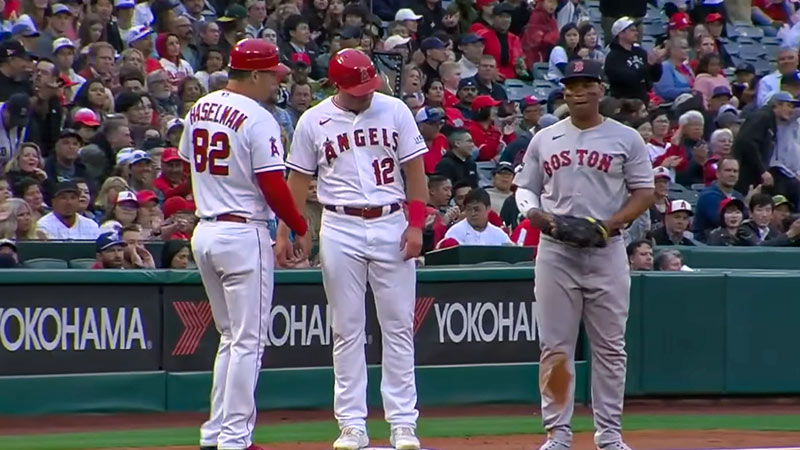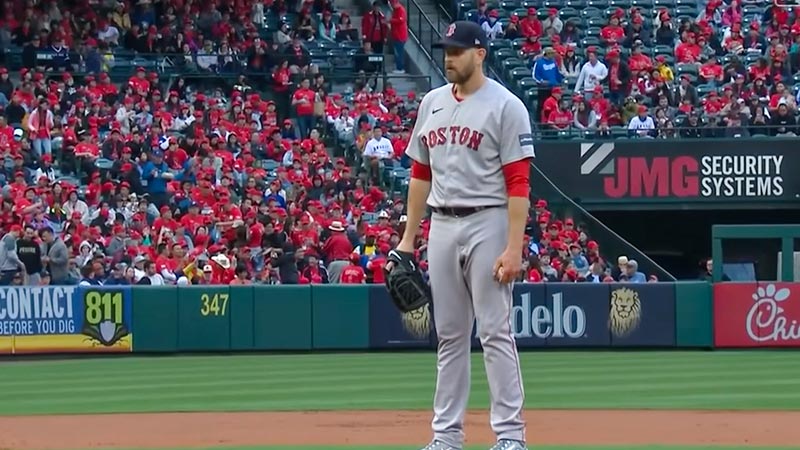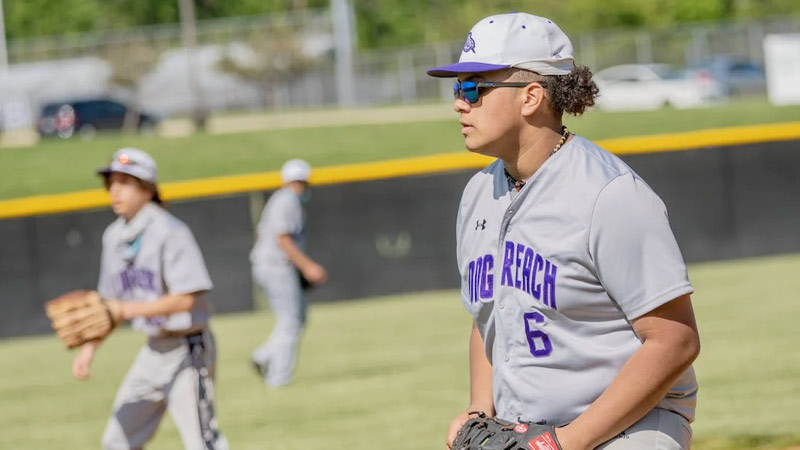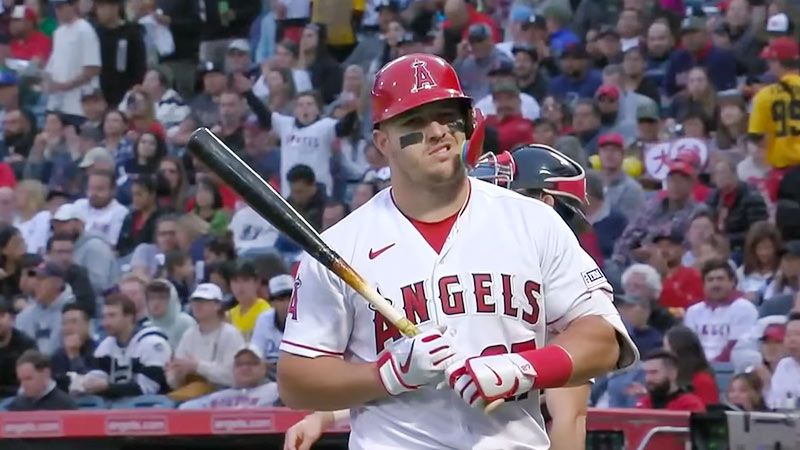In the world of baseball, doubleheaders have long held a special place. These unique events, featuring two games played in immediate succession, offer fans extended hours of their favorite sport and an immersive experience.
While doubleheaders pose challenges for players and teams, they provide an opportunity for unforgettable moments and a heightened sense of excitement. Though it is very important in the context of baseball, many of us don’t know exactly what it is.
In this article, we will explore the concept of a doubleheader in baseball. So, if you have any confusion about this topic, you should go on till the end. I am sure that you will have all your confusion gone.
Definition and Format of a Doubleheader
A doubleheader in baseball refers to a schedule of two consecutive games played between the same two teams on the same day.
It is typically scheduled as a result of a game being postponed due to factors such as inclement weather, scheduling conflicts, or other unforeseen circumstances.
Scheduling and Format of Doubleheaders
Doubleheaders can be scheduled for various reasons, such as making up for postponed games due to weather conditions or accommodating a busy season schedule.
The exact format of a doubleheader can vary depending on the league and level of play, but there are generally two main types: day-night doubleheaders and back-to-back doubleheaders.
- Day-Night Doubleheaders: In a day-night doubleheader, the first game is typically played in the afternoon, with a short break between the two games, and the second game taking place in the evening.
This format allows teams to sell separate tickets for each game and maximize attendance and revenue. It is common in the major leagues and provides fans with the opportunity to enjoy a full day of baseball.
- Back-to-Back Doubleheaders: Back-to-back doubleheaders involve playing two games consecutively without a significant break between them.
This format was more common in the past and is still occasionally used in certain leagues or circumstances. It requires teams and players to endure a grueling day of continuous play, with little time for rest and recovery between games.
Distinction Between Day-night and Back-to-back Doubleheaders
It’s important to note the distinction between day-night doubleheaders and back-to-back doubleheaders. Day-night doubleheaders are more prevalent in modern baseball, especially in the major leagues, as they allow for better scheduling and revenue generation.
On the other hand, back-to-back doubleheaders, where games are played in immediate succession without an extended break, are less common but can provide a unique and challenging experience for players and fans alike.
A doubleheader in baseball refers to the scheduling of two games between the same teams on the same day. Whether it’s a day-night doubleheader or a back-to-back doubleheader, these events offer fans the opportunity to immerse themselves in a full day of baseball action and witness the endurance, strategy, and excitement that comes with playing two games in rapid succession.
Reasons for Doubleheaders
Now, you must be thinking about why players go for a doubleheader, right? There are specific few reasons why players need to do it. The possible causes are discussed below.
Make-up Games and Rescheduled Matches
- Make-up games: One of the primary reasons for scheduling a doubleheader is to make up for postponed games. Inclement weather, such as rain or snow, can lead to the cancellation of games.
In order to ensure that the teams complete their full schedule, doubleheaders are scheduled to accommodate the missed games. This allows for a fair and balanced season where all teams have the opportunity to play the required number of games. - Rescheduled matches: In addition to weather-related cancellations, unforeseen circumstances like power outages or facility issues can also result in the need for rescheduled matches. Doubleheaders provide an efficient solution to ensure that the affected games are played within the constraints of the season schedule.
Accommodating a Busy Schedule
Season Schedule Constraints
Baseball teams have a fixed number of games to play within a given season. Sometimes, due to factors such as rainouts or scheduling conflicts, there may be a need to fit in additional games within a limited timeframe.
Doubleheaders help to accommodate these extra games and prevent the need for extending the regular season or compromising the integrity of the schedule.

Compact Schedules
In certain situations, teams may have a tight schedule that requires them to play multiple games in a short period. This can occur during stretches of consecutive games or when teams have limited off days.
By scheduling a doubleheader, teams can efficiently complete their games, reducing the strain on players and minimizing travel logistics.
Minimizing Travel Times and Expenses
Reducing Travel
Doubleheaders can be advantageous in minimizing travel for teams, especially in situations where two teams from distant locations are scheduled to play each other multiple times.
By scheduling two games in a single day, teams can avoid multiple trips and reduce the time spent traveling, which can be physically taxing and costly.
Cost-saving Measure
Traveling for games incurs expenses for teams, including transportation, accommodation, and meals. Doubleheaders can help reduce these costs by consolidating games and allowing teams to complete a series in a shorter timeframe.
This cost-saving aspect can be beneficial for both major league teams and lower-level organizations with limited resources.
Evolution of Doubleheaders in Baseball
With time, the doubleheader system gets evaluated constantly. It was not like it is now in the previous era. However, you can understand the evolution of this concept from the below points.
Historical Prevalence of Doubleheaders in the Past
Early Days of Baseball
Doubleheaders were more common in the earlier years of baseball. They were often scheduled as a way to maximize attendance and revenue, providing fans with the opportunity to watch two games in a single day.
Teams would frequently play doubleheaders on certain days, such as Sundays, to complete a series or make up for rainouts.
Convenience and Cost-saving
Doubleheaders were also a practical solution for reducing travel times and expenses. By playing two games in immediate succession, teams could clear a four-game series with a single opponent over a shorter time frame, minimizing the need for additional trips and accommodations.
Impact of Television Broadcasting on Doubleheaders
Rise of Television Broadcasting
As television broadcasting became a significant source of revenue for baseball, the scheduling and frequency of doubleheaders began to change.
Television networks preferred to have games scheduled at different times to maximize viewership and advertising revenue.
This led to a decrease in the prevalence of doubleheaders, as individual games were given more prominence and airtime.
Focus on Individual Games
With the emphasis on broadcasting single games, doubleheaders became less common. Networks and teams prioritized the individual game experience, with longer breaks between games and separate ticketing for each contest.
This shift catered to the preferences of television viewers and allowed for more comprehensive coverage and analysis of each game.
Frequency of Doubleheaders in Modern Baseball

Limited Occurrence
In modern baseball, doubleheaders have become less frequent, particularly in the major leagues. They are now primarily scheduled as a means to make up for postponed games due to inclement weather or unforeseen circumstances.
The focus has shifted towards maximizing revenue from single games, with doubleheaders serving as a way to ensure a full season schedule without extending the regular season.
Fan Experience and Revenue Generation
While the frequency of doubleheaders has decreased, they still hold a special place in baseball and can be a unique experience for fans.
Doubleheaders provide an opportunity to watch two games for the price of one ticket, offering a full day of baseball action.
This can be appealing to fans who appreciate the value and immersion that come with witnessing multiple games in a single day.
Experience for Fans
To understand the concept of the doubleheader, you need to learn about some of the remarkable fans’ experiences. Here are those scenarios of a doubleheader.
The Appeal of Doubleheaders for Baseball Enthusiasts
Extended Day of Baseball
For avid baseball enthusiasts, doubleheaders offer the chance to indulge in an extended day of their favorite sport. Instead of just one game, fans can immerse themselves in two back-to-back contests, doubling the excitement and enjoyment of the day.
Value for Ticket Price
Attending a doubleheader often provides excellent value for fans. With a single ticket, they can witness two games, effectively getting twice the baseball action for their money.
This affordability makes doubleheaders an attractive option for fans looking to experience more games without breaking the bank.
Benefits for Fans Attending Doubleheaders
Uninterrupted Baseball Experience
Doubleheaders provide fans with a continuous flow of baseball throughout the day. There are no long breaks between games, allowing fans to stay engaged and maintain the momentum of the action on the field.
This uninterrupted experience keeps the excitement levels high and enhances the overall enjoyment of the games.
Variety of Matchups and Strategies
Doubleheaders often showcase different pitching matchups and strategic decisions by the teams. Fans have the opportunity to witness a diverse range of players, strategies, and outcomes within a single day.
This variety adds depth to the fan experience, providing a broader perspective on the intricacies of the game.
Enhanced Camaraderie and Community
Attending a doubleheader can foster a sense of camaraderie among fans. With a shared passion for baseball, fans can engage in lively discussions, cheer together, and form connections throughout the course of the day.
The communal experience of witnessing two games side by side can create lasting memories and friendships.
Memorable Moments Associated With Doubleheaders
Baseball History and Tradition
Doubleheaders have a rich history and are often associated with the traditions and nostalgia of the sport.
They harken back to a time when doubleheaders were more prevalent, evoking memories of legendary players, iconic moments, and the timeless allure of the game itself.
For many fans, attending a doubleheader can be a way to connect with the past and embrace the enduring heritage of baseball.
Memorable Performances
Doubleheaders have witnessed extraordinary performances by players that are etched into baseball lore.
From historic home runs to impressive pitching feats, these special events have provided the stage for players to deliver standout performances.
Fans attending doubleheaders have the chance to witness such moments firsthand, creating memories that will last a lifetime.
Challenges for Players and Teams
Players must have gone through some specific challenges while attempting for a doubleheader. Here are some of the common challenges they have to face.
Physical Demands of Playing Two Games in a Single Day

Endurance and Stamina
Playing two full games in a single day can be physically demanding for players. The physical exertion required for running, throwing, and hitting over an extended period can lead to fatigue and muscle strain.
Maintaining energy levels and performance throughout the day becomes crucial for players to deliver their best performance.
Mental Focus and Concentration
Alongside physical endurance, players must also sustain mental focus and concentration during doubleheaders.
The ability to stay mentally sharp throughout two games, making split-second decisions and executing plays effectively, is essential.
The mental strain of maintaining concentration for an extended period can be as challenging as the physical demands.
Strategies for Managing Pitching Rotations
Pitching Rotations
Doubleheaders require careful management of pitching rotations. Teams need to plan ahead and ensure they have enough capable pitchers to cover both games effectively.
This may involve adjusting the rotation order, utilizing spot starters, or relying on a combination of starters and relievers to cover the innings required.
Pitching depth and flexibility become crucial assets for teams during doubleheaders.
Player Workload and Fatigue
Managing player workload is crucial to avoid excessive fatigue and reduce the risk of injuries.
In doubleheaders, teams must carefully distribute playing time, making strategic substitutions and giving regular players the necessary rest to prevent overexertion.
Coaches and trainers closely monitor player fatigue levels and employ strategies such as rotating position players or utilizing bench depth to maintain performance and minimize the risk of injuries.
Balancing Performance and Recovery During Doubleheaders
Performance Optimization
Doubleheaders present a unique challenge in terms of optimizing performance for both games. Teams must strike a balance between playing at a high level in the first game while preserving energy and readiness for the second game.
Coaches and players work together to develop strategies for maintaining performance levels, such as conserving energy during non-essential moments and pacing themselves throughout the day.
Recovery and Regeneration
Efficient recovery strategies become crucial in preparing players for the second game of a doubleheader. This includes practices such as proper hydration, nutrition, stretching, and rest periods between games.
Teams employ the expertise of trainers and support staff to facilitate quick recovery and ensure players are physically and mentally prepared for the second game.
FAQs
Are doubleheaders more physically demanding for players compared to regular single games?
Yes, doubleheaders can be more physically demanding due to the extended duration of play and the need to sustain physical exertion for two consecutive games.
Players must maintain their endurance, stamina, and mental focus throughout the day.
How do teams manage player fatigue during doubleheaders?
Teams manage player fatigue by carefully distributing playing time and making strategic substitutions. Coaches monitor player workload, utilize bench depth, and provide rest periods to prevent overexertion and reduce the risk of injuries.
Are there any specific rules or limitations on the number of pitchers that can be used in a doubleheader?
There are no specific rules or limitations on the number of pitchers that can be used in a doubleheader. Teams have the flexibility to utilize their pitching staff as needed to cover the innings required for both games.
However, roster rules and limitations may vary depending on the league or level of play.
How do teams adjust their pitching rotations for doubleheaders?
Teams may adjust their pitching rotations for doubleheaders by rearranging the order of their starting pitchers. This allows teams to ensure that they have fresh arms available for both games while also considering factors such as pitcher workload and matchups.
Conclusion
Doubleheaders in baseball offer fans an immersive day of extended play and excellent value for their ticket price. While they present challenges for players and teams, including physical demands and strategic considerations, doubleheaders have a unique appeal.
They evoke nostalgia, create memorable moments, and showcase the enduring love for the sport. However, you must be now aware of the importance of doubleheaders in the context of baseball.
Now, share your thought with us. Thank you for your time.







